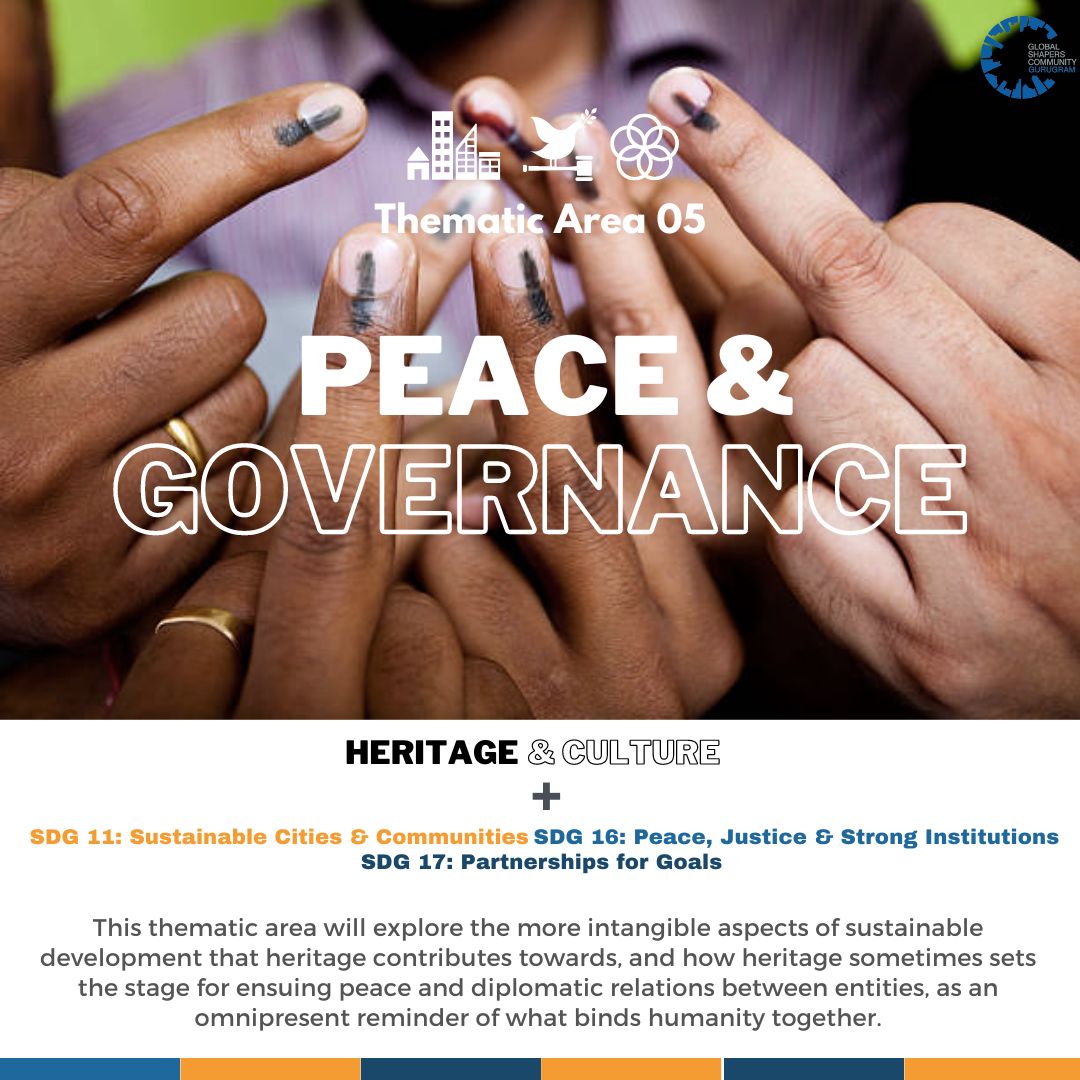
Heritage for Peace and Governance

The inclusion of peace and governance within the SDG framework recognizes that unjust, warring societies, communities and countries will never be able to progress in sustainable development effectively. The interlinkages between heritage and SDG 16, which is the primary SDG relating to peace & governance (Peace, Justice & Strong Institutions), along with tangential interlinkages to SDG 11 (Sustainable Cities & Communities) and SDG 17 (Partnership for the Goals).
While famous historical heritage sites have often been the setting were ideals of peace or theories of governance were birthed, such Bodh Gaya where Buddha received enlightenment or Pnyx in Athens, the Greek hill known as the birthplace of democracy, it is also interlinked beyond just being the setting.Even geopolitical alliances and agreements are often formed or established in the backdrop of heritage sites, like peace treaties and so on, sometimes heritage can be a reminder of the past falterings humanity, whether its war memorials or historically famous sites damaged in battle, but heritage’s contribution to peace and governance is beyond that.
Heritage assets and processes associated with it can also offer opportunities for transparent, participatory and accessible governance and associated practices, especially which take into account culturally diverse communities, and often heritage sites, especially in Rome and Greece, and even in South Asia have been thriving melting pots of cultural exchange & society-building with peaceful governance in mind. However, the threat of war and conflicts have often been negative for heritage, especially when we consider the intentional destruction of heritage, such as in Syria, along with undermining of identities and creation of divide between communities, however then the inclusion of heritage in the violence can often serve as a stark reminder for the need for reconciliation.
Along with this, tourism in general, propelled by the existence of heritage sites is a major driver of cultural assimilation and appreciation of other communities, which leads to cultural rapprochement between people, and helps foster a more peaceful, tolerant society where culturally diverse members understand each other. Intercultural dialogue, participatory heritage management with diverse representation and so on, fueled by heritage can be a big boost towards achieving goals related to peace & governance.
Finally, in the spirit of SDG 17 & international collaboration for peace & governance or SDG 16, with their benefits to multiple stakeholders across the spectrum of communities, nationalities and regions, can act as an important medium for the establishment of international standards & approaches which prioritise human rights, diversity & environment sustainability, serving as the backdrop for our collective will to move towards an inclusive, prosperous, peaceful & sustainable future.
References:
- Heritage and the sustainable development goals: policy guidance for heritage and development actors, prepared by Prepared by the Sustainable Development Goals Working Group – Priority Action 1 Task Team, and published by International Council on Monuments and Sites – ICOMOS, Source Link: https://openarchive.icomos.org/id/eprint/2453/
- The Contribution of World Heritage to Sustainable Development, UNESCO. Source Link: https://whc.unesco.org/en/sustainabledevelopment/

